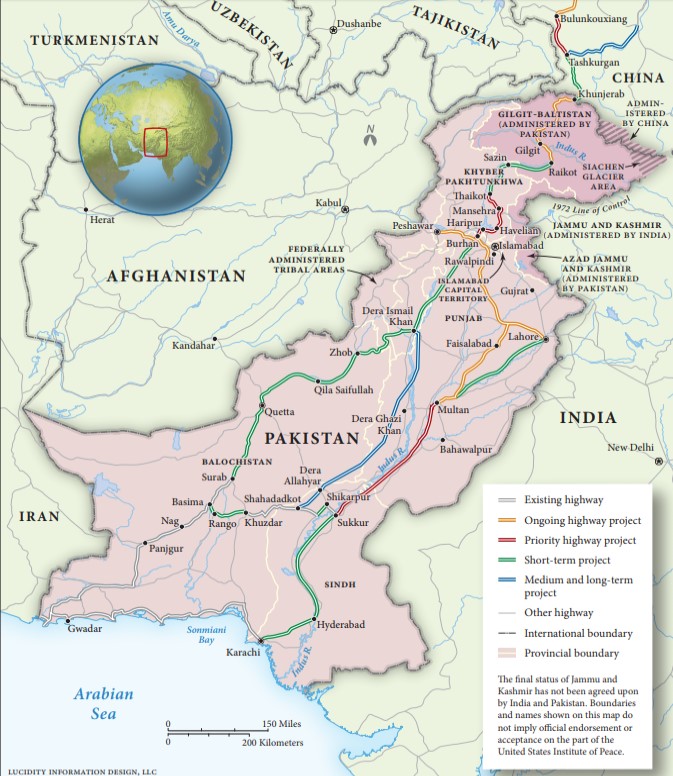China 'colonising' terror-supporting Pak - EFSAS
ANI | Updated: Jun 20, 2018 18:02 IST
Amsterdam [Netherlands], June 20 (ANI):
China is taking advantage of
Pakistan being isolated by the international community post allegations of it sponsoring terrorism and is fully aware that its patronising attitude will eventually turn Islamabad into a colony dependent on
China for day-to-day survival, a Netherlands-based think tank has said.
The Amsterdam-based
European Foundation for South Asian Studies (EFSAS) said, "As long as
Pakistan operates in the shadow of another East India Company (i.e.
China-
Pakistan Economic Corridor or
CPEC project) and does not realize the importance of protecting its national interests, which in essence are the people of
Pakistan, any attempts for national development will transform into national calamity."
The EFSAS article further goes on to state, "The Chinese master plan conceives (of) a picture where the majority of
Pakistani socio-economic sectors are deeply penetrated by Chinese companies and Chinese culture; thus, Islamabad puts itself at risk of facing its finances and societal structure experiencing a colossal wreck. The combination of high upfront tariffs, interest rates and surcharges will complicate
Pakistan's efforts to repay its loans, forcing the state to increase its domestic and export prices, making it difficult to compete with neighbouring and other countries which maintain lower prices. The borrower is always servant to the lender. The 15-year (
CPEC) mega project illuminates how
Pakistan voluntarily is becoming progressively subjugated by
China and its terms and conditions."
Though
China has always called
Pakistan as its friend also reflected in the statement by Chinese President Xi Jinping during his maiden visit to
Pakistan in 2015 but this friendship has been always proven to be a burden for
Pakistan due to the mounting debt on it by
China.
The
CPEC is proving to be an unfair deal for
Pakistan which will lead to unending sufferings for it, the EFSAS article predicts.
If
Pakistan does not weigh the pros and cons of each
CPEC-related project wisely, it will always remain a win-win situation for
China. This can be seen in the case of the Gwadar Port where profits generated via the trade route will be 91 percent in favour of
China in the following 40 years.
As per the interests rates charged by the
China Development Bank and the
China EXIM Bank,
China could recover its investment in less than three years, but for
Pakistan, it could take another 25 years.
Claims by
China that the
CPEC will provide jobs for
Pakistanis appear to be going up in smoke, giving way to public resentment and suspicion.
The
China Pakistan Free Trade Agreement (FTA) has only seen several job opportunities moving from
Pakistan to
China, leading to a economic crisis in the country.
The construction of the
CPEC has led to rising concerns of land grabbing in Gilgit-Baltistan.
Apart from the Chinese financial invasion, which constitutes securing jobs for its workers at the expense of locals, and flooding the market with cheap goods, which suffocates the domestic business, the adverse dimensions of the cultural exchange between the two countries should also be considered, says EFSAS.
It claims that
Pakistanis are getting increasingly worried and wary about a cultural invasion by the Chinese.
In July-August 2015, a group of
Pakistani teachers took part in a 15-day Chinese language training programme. The rising numbers of
Pakistani students going to
Chinafor higher education is another area of concern.
Pakistani students are now being sponsored for studies in
China not just by the Chinese government, but also by Chinese companies. In 2017, around 2,500
Pakistani students were enrolled in different Chinese universities, bringing the total number of
Pakistani students in
China to 22,000.
Chinahas now become the largest destination for
Pakistani students seeking overseas studies.
According to statistics from 2016 released by the Chinese Ministry of Education, more than 200,000 students from 64 countries along the Belt and Road Initiative were studying in
China. The number of students studying in
China from countries along the Silk Road project has increased greatly under a series of preferential policies and scholarships.
This is seen in
Pakistan as a calculative move by
China.
The
CPEC will ensure that there are a sufficient number of Chinese living in
Pakistan, which in the long run, might trigger off cultural friction.
Although
China advertises
Pakistan as its brother and 'all-weather friend', the truth is that their 'friendship' has always had an embedded enduring imbalance;
Pakistan is in
China's debt and the debt will only deepen. (ANI)





